Shortly after the commencement of the Libya bombing campaign on March 19, the Pentagon ordered the testing of the B61-11 nuclear bomb. These tests announced in an April 4 press release, pertained to the installed equipment and weapon’s components. The objective was to verify the functionality of the nuclear bomb…..The B-2 Spirit Stealth bomber is the “chosen carrier” of the B61 -11 nuclear bombs. The B-2 Spirit Stealth bomber out of Whiteman Air Force Base in Missouri was not only sent on a mission to bomb Libya at the very outset of the air campaign, it was subsequently used in the testing of the B61 Mod 11 nuclear bomb.The B61-11 has a yield of two thirds of a Hiroshima bomb. Why were these tests of the equipment and functionality of a tactical nuclear weapon scheduled shortly after the onset of the Libya bombing campaign?Why now?Is the timing of these tests coincidental or are they in any way related to the chronology of the Libya bombing campaign?
U.S. Air Force Global Strike Command, which is responsible for the coordination of US bombing operations directed against Libya was also involved in the testing of the B61-11 nuclear bombs.Both the bombing of Libya by the B-2 Spirit Stealth bomber (see image above) on March 19-20, as well as the testing of the functionality of the B61-11 nuclar bomb (announced April 4) were implemented out of the same US Air Force base in Missouri.
 |
America’s Planned Nuclear Attack on Libya
PART I
– by Prof. Michel Chossudovsky – 2011-03-30
|
|
Thinking the Unthinkable. The Pentagon’s Plan to Nuke Libya
|
The Pentagon had envisaged the use of the B61 Mod 11 nuclear bomb against Libya. Categorized as a mini-nuke, the B61-11 is a 10 kiloton bomb with a yield equivalent to two thirds of a Hiroshima bomb. (See Michel Chossudovsky, America’s Planed Nuclear Attack on Libya, Global Research, March 25, 2011)
The Pentagon’s 1996 plan to nuke Libya had been announced in no uncertain terms at a press briefing by Assistant Secretary of Defense Harold P. Smith:
“[The] Air Force would use the B61-11 [nuclear weapon] against Libya’s alleged underground chemical weapons plant at Tarhunah if the President decided that the plant had to be destroyed. ‘We could not take [Tarhunah] out of commission using strictly conventional weapons,’ Smith told the Associated Press. The B61-11 ‘would be the nuclear weapon of choice,’ he told Jane Defence Weekly. (The Nuclear Information Project: the B61-11)
Clinton’s Defense Secretary William Perry –who was present at the press briefing– had earlier told a Senate Foreign Relations Committee that “the U.S. retained the option of using nuclear weapons against countries [e.g. Libya] armed with chemical and biological weapons.”(Ibid, See also Greg Mello, The Birth Of a New Bomb; Shades of Dr. Strangelove! Will We Learn to Love the B61-11? The Washington Post, June 01, 1997)
The Department of Defense’s objective was to fast track the “testing” of the B61-11 nuclear bomb on an actual country and that country was Libya:
“Even before the B61 came on line, Libya was identified as a potential target”. (Bulletin of the Atomic Scientists – September/ October 1997, p. 27). (For further details see Michel Chossudovsky, America’s Planned Nuclear Attack on Libya, March 2011)
While the 1996 plan to bomb Libya using tactical nuclear weapons was subsequently shelved, Libya was not removed from the “black list”: “The Qadhafi regime” remains to this date a target country for a pre-emptive (“defensive”) nuclear attack.
As revealed by William Arkin in early 2002, “The Bush administration, in a secret policy review… [had] ordered the Pentagon to draft contingency plans for the use of nuclear weapons against at least seven countries, naming not only Russia and the “axis of evil” Iraq, Iran, and North Korea but also China, Libya and Syria. (See William Arkin, “Thinking the Unthinkable”, Los Angeles Times, 9 March 2002).
According to the 2001 Nuclear Posture Review, adopted by the Senate in 2002, Libya is on the “Pentagon’s list”. Moreover, it is also important to emphasize that Libya was the first country to be tagged and formally identified (at a Department of Defense press briefing) as a possible target for a US sponsored nuclear attack using the B61 Mod 11 nuclear bomb. This announcement was made in 1996, five years prior to the formulation of the pre-emptive nuclear war doctrine under the Bush administration (i.e the 2001 Nuclear Posture Review).
What is the relevance of the history of the B61-11 nuclear bomb and earlier threats directed by the Clinton administration against Libya?
Has the project to nuke Libya been shelved or is Libya still being contemplated as a potential target for a nuclear attack?
Shortly after the commencement of the Libya bombing campaign on March 19, the US Department of Defense ordered the testing of the B61-11 nuclear bomb. These tests pertained to the installed equipment and weapon ‘s components of the nuclear bomb.
The announcement of these tests was made public on April 4; the precise date of the test was not revealed, but one can reasonably assume that it was in the days prior to the April 4 press release by the National Nuclear Security Administration (NNSA. Press Release, NNSA Conducts Successful B61-11 JTA Flight Test, Apr 4, 2011,)
The B-2 Spirit Stealth bomber is the US Air Force’s chosen “carrier” for the delivery of the B61 Mod 11 nuclear bomb. In late March or early April (prior to April 4), the B-2 Spirit Stealth bomber from the 509th Bomber Wing operating out of Whiteman Air Force Base, was used in the so-called “Joint Test Assembly” (JTA) of the B61 Mod 11 nuclear bomb.
In other words, the B61-11 was tested using the same B-2 Spirit Stealth bombers out of Whiteman Air Force Base, which were used to bomb Libya at the very outset of the air campaign.
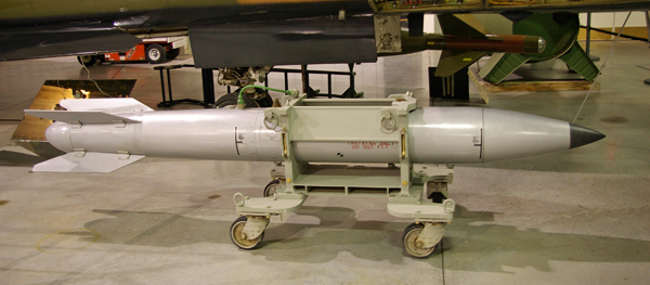
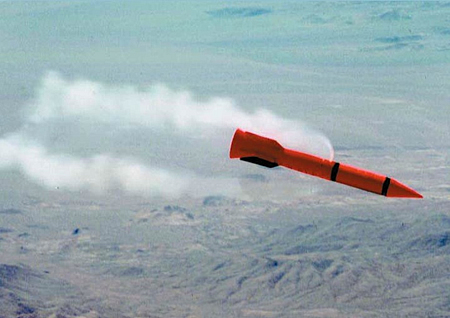
B61-11 Simulation
The Joint Test Assembly (JTA) of the B61-11
This JTA testing was undertaken by the National Nuclear Security Administration (NNSA) together with the U.S. Air Force Global Strike Command, which coincidentally is responsible for the coordination of US bombing operations directed against Libya as well as ongoing operations in Iraq and Afghanistan.
“The JTA was produced by the NNSA in support of the Joint Surveillance Flight Test Program between the Department of Defense and the NNSA” (Press release, op cit)
The Joint Test Assembly (JTA) in the case of the B61 Mod 11 nuclear bomb, requires testing the equipment of the B61-11 using a proxy conventional non-nuclear warhead. Essentially what is involved is to test all the installed equipment on the nuclear bomb and ensure its functionality without actually having a nuclear explosion. The JTA test “was built to simulate the actual B61-11 weapon configuration utilizing as much war reserve hardware as feasible. It was assembled at the Pantex plant in Amarillo, Texas and was not capable of nuclear yield, as it contained no special nuclear materials.” (Press Release, NNSA Conducts Successful B61-11 JTA Flight Test, Apr 4, 2011)
“JTA tests [are to ensure] that all weapon systems [e.g. B61-11 nuclear bomb] perform as planned and that systems are designed to be safe, secure and effective,”…. A JTA contains instrumentation and sensors that monitor the performance of numerous weapon components [e.g of the B61-11] during the flight test to determine if the weapon functions as designed. This JTA also included a flight recorder that stored the bomb performance data for the entire test. The data is used in a reliability model, developed by Sandia National Laboratories, to evaluate the reliability of the bomb. (Ibid)
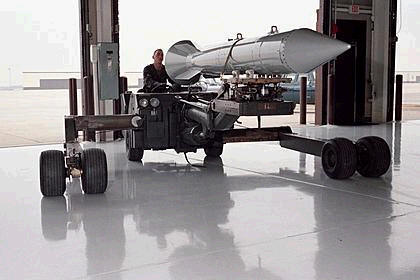
B61 Model 11 nuclear bomb at Whiteman Air force base
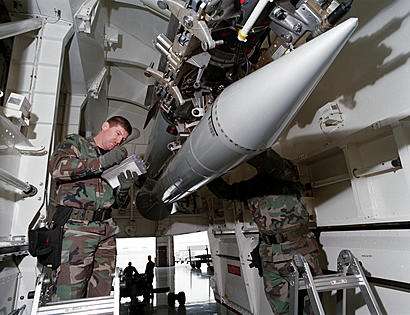
The B-2 Spirit Stealth Bomber operating out of the Whiteman Air Force Base was reported to have “delivered and released” the B61-11 JTA at the Tonopah Test Range in Nevada, which is routinely used to test nuclear ordnance. (See Press Release, op cit.).
The Tonopah Test Range while owned by the US Department of Energy, is managed and operated by Sandia National Laboratories, a division of America’s largest weapons producer Lockheed-Martin (under permit with the NNSA). (See http://prod.sandia.gov/techlib/access-control.cgi/2004/042812.pdf)
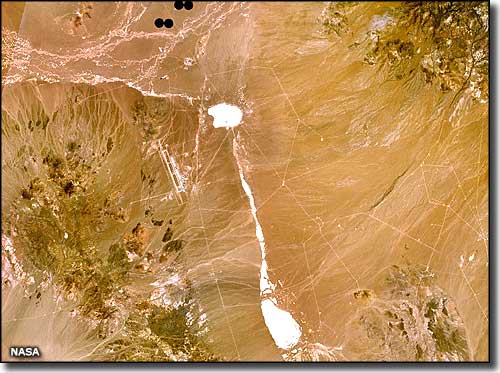
Aerial View of Tonopah Test Range where the B61 11 JTA was tested using a B-2 Spirit Stealth bomber. Source NASA.
The Deployment of B 2 Stealth bombers to Libya
Why were these JTA tests of the equipment and functionality of a tactical nuclear weapon scheduled shortly after the onset of the Libya bombing campaign?
Why now?
Is the timing of these tests coincidental or are they in any way related to the chronology of the Libya bombing campaign?
It is worth noting that the U.S. Air Force Global Strike Command was in charge of both the JTA tests of the B61-11 as well as the deployment of three B-2 Spirit Stealth bombers to Libya on March 19.
“Three B-2 Spirit bombers, piloted by two men each, made it back after the 11,418-mile round trip from the Whiteman Air Force Base in Missouri – where they are kept in special hangars – to Libya, where they hit targets on forces loyal to Colonel Gaddafi and back again.”(Libya-crisis-B2-stealth-bombers-25-hour-flight-Missouri-Tripoli, Daily Mail, March 21, 2011)
In other words, both the deployment of the B-2s to the Libya war theater as well as the JTA test (using the B-2 bomber for delivery) were coordinated out of Whiteman Air Force base.
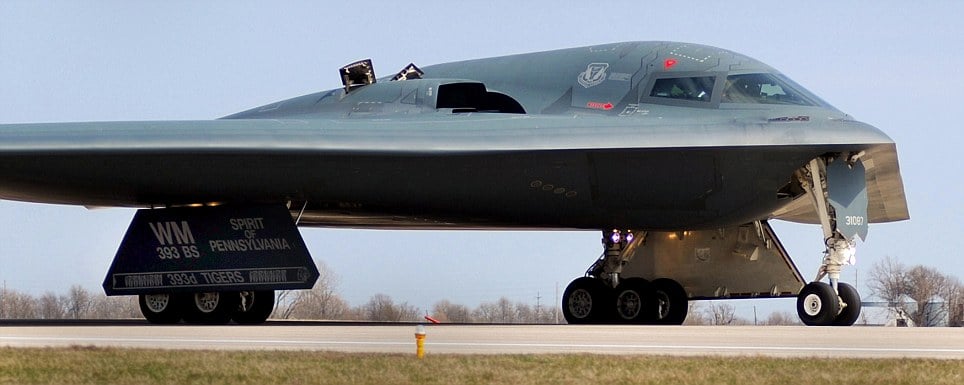
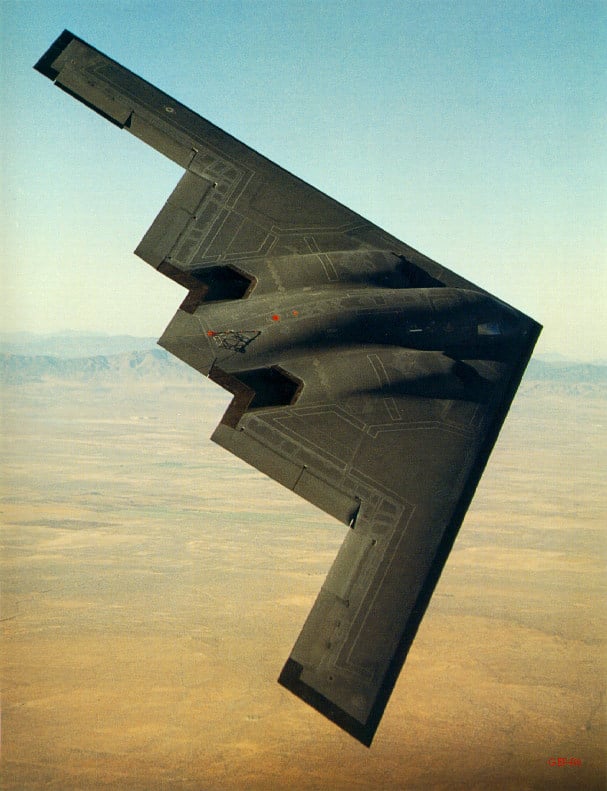
The report suggests that the B-2 Stealth bombers dropped 45 one ton satellite guided missiles on Libya, which represents an enormous amount of ordnance: “At $2.1bn, they are the most expensive warplanes in the world and rarely leave their climate-controlled hangars. But when it does, the B-2 bomber makes a spectacularly effective start to a war – including during this weekend’s aerial attack on Libya’s air defences. (Daily Mail, March 21, 2011, op cit)
While we are not in a position to verify the accuracy of these reports, the 45 one-ton bombs correspond roughly to the B-2 specifications, namely each of these planes can carry sixteen 2,000 pound (900 kg) bombs.
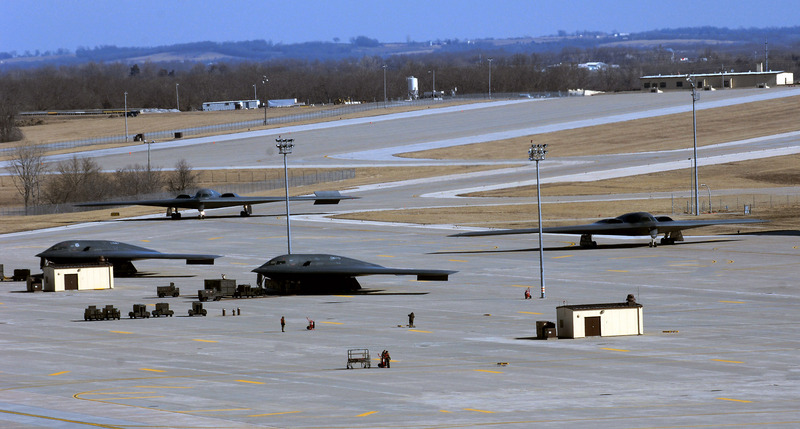
Whiteman Air Force Base
Concluding Remarks: The Decision to Use Nuclear Weapons
Through a propaganda campaign which has enlisted the support of “authoritative” nuclear scientists, the B61-11 “mini-nuke” is presented as an instrument of peace rather than war.
In an utterly twisted logic, low yield tactical nuclear weapons are presented as a means to building peace and preventing “collateral damage”.
In this regard, US nuclear doctrine ties in with the notion that the US-NATO war under Operation Odyssey Dawn is a humanitarian undertaking.
The important question addressed in this article is whether the recent test of a B61-11 is “routine” or was it envisaged by the DoD directly or indirectly in support of Operation Odyssey Dawn, implying the possible deployment of mini nukes at some future stage of the Libya bombing campaign. There is no clear-cut answer to this question.
It should be emphasized, however, that under the doctrine of “pre-emptive nuclear war” mini nukes are always deployed and in “a state of readiness” (even in times of peace). Libya was the first “rogue state” to be tagged for a nuclear attack in 1996 prior to the approval of the mini nukes for battlefield use by the US Congress.
The Pentagon claims that “mini-nukes” are harmless to civilians because “the explosion takes place under ground”. Not only is the claim of an underground explosion erroneous, each of these ‘mini-nukes’, constitutes – in terms of explosion and potential radioactive fallout – a significant fraction of the atom bomb dropped on Hiroshima in 1945….
We are at a dangerous crossroads: The rules and guidelines governing the use nuclear weapons have been “liberalized” (i.e. “deregulated” in relation to those prevailing during the Cold War era). The decision to use low yield nuclear nuclear weapons (e.g. against Libya) no longer depends on the Commander in Chief, namely president Barack Obama. It is strictly a military decision. The new doctrine states that Command, Control, and Coordination (CCC) regarding the use of nuclear weapons should be “flexible”, allowing geographic combat commanders to decide if and when to use of nuclear weapons:
Known in official Washington, as “Joint Publication 3-12”, the new nuclear doctrine (Doctrine for Joint Nuclear Operations , (DJNO) (March 2005)) calls for “integrating conventional and nuclear attacks” under a unified and “integrated” Command and Control (C2).
It largely describes war planning as a management decision-making process, where military and strategic objectives are to be achieved, through a mix of instruments, with little concern for the resulting loss of human life.
Military planning focuses on “the most efficient use of force”, i.e. an optimal arrangement of different weapons systems to achieve stated military goals. In this context, nuclear and conventional weapons are considered to be “part of the tool box”, from which military commanders can pick and choose the instruments that they require in accordance with “evolving circumstances” in the “war theatre”. (None of these weapons in the Pentagon’s “tool box”, including conventional bunker buster bombs, cluster bombs, mini-nukes, chemical and biological weapons are described as “weapons of mass destruction” when used by the United States of America and its “coalition” partners). Michel Chossudovsky, Is the Bush Administration Planning a Nuclear Holocaust? Global Research, February 22, 2006
Michel Chossudovsky, April 2011
Related Articles
 |
America’s Planned Nuclear Attack on Libya
– by Prof. Michel Chossudovsky – 2011-03-30
|
|
Thinking the Unthinkable. The Pentagon’s Plan to Nuke Libya
|
 |
All Out War on Libya, Surge in the Price of Crude Oil…
“Humanitarian Wars are Good for Business”…. Speculators Applaud….
– by Michel Chossudovsky – 2011-03-18
|
|
.
|
 |
Insurrection and Military Intervention: The US-NATO Attempted Coup d’Etat in Libya?
– by Prof Michel Chossudovsky – 2011-03-07
|
|
US and NATO military advisers and special forces are already on the ground.
|
| “Operation Libya” and the Battle for Oil: Redrawing the Map of Africa
– by Prof Michel Chossudovsky – 2011-03-09
|
ANNEX The B-2 Spirit Stealth Bomber
The B-2 Spirit aircraft is described as “deadly and effective’ yet at the same time it is upheld as an instrument of “humanitarian warfare”. Used at the outset of Operation Odyssey Dawn, this aircraft has the mandate under UN Security Councill resolution 1973 to “protect the lives of civilians”.
“An assessment published by the USAF showed that two B-2s armed with precision weaponry can do the job of 75 conventional aircraft. That makes it a powerful weapon to strike targets including bunkers, command centres, radars, airfields, air defences.” (Ibid) The mission is said to have have dropped a total of 45 one ton satellite guided missiles, which broadly corresponds to the 15 out of the 16 2000 pound bombs mentioned above.(Ibid)
The B-2 Spirit as carrier of the B61 mod 11 bunker buster bomb, is equipped to accommodate 16 B61-11 mini-nukes of about 1,200 lb (540 kg).
See the following videos:
Northrop Grunman Video Clip on the B-2
http://www.youtube.com/watch?v=LcX9LbR4pqc


